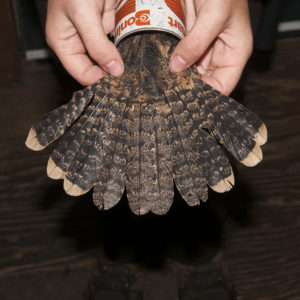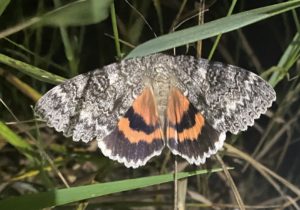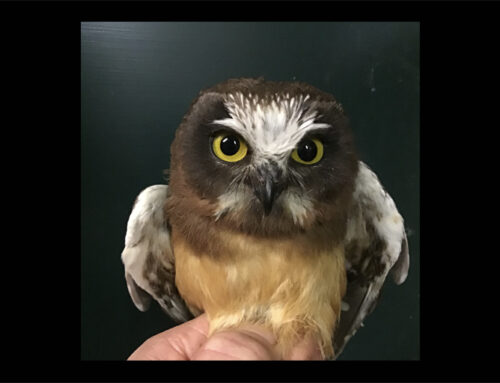This week, as some of you saw on social media, we broke the previous record of 538 juvenile saw-whet owls set in 2007 with a total of 560 on August 4th! We are currently up to 573 juvies, 33 adults, and 38 Long-eared Owls for a record breaking 644 owls banded in the summer (previously set 2017). As mentioned in an earlier blog, this year has been a pleasant surprise with unusually high numbers of juvenile birds. At this point in the cycle, the peak year should not occur until 2022, but birds continue to show us that we do not have their movements figured out yet. The need for long-term studies like this are vital to try to understand these cycles, and learn how they influence or interact with other migration seasons.

Juvenile Northern Saw-whet Owl #539 (the record breaker).
Aside from owls, we also banded an Eastern Whip-poor-will on 8/6. They are nocturnal nightjars that are usually heard and not often seen. We do not target this species, but they can passively fly into the nets in spring or summer.

Her camouflaged feather patterns are so intricate and are made to look like leaf litter or tree bark.

Female Eastern Whip-poor-will.

Females have buffy tips on their outer tail feathers, whereas a male would have white.
Lastly, this week has produced a few other creatures of the night that the owl bander’s enjoy watching and photographing.

Blue-spotted Salamander.

Once-married Underwing.

Burrowing Wolf Spider.
Thanks for reading,
Hannah Toutonghi & Chris Neri
WPBO Summer Owl Bander’s



